Defeat Corporate Fascist Gameplan
India 2014: Defeat Corrupt Communal Corporate Fascist Gameplan
With the 2014 Lok Sabha at the doorstep, people of India are determined to vote to punish and change the Congress-UPA’s regime of scams, loot, and repression. Taking advantage of this genuine anger, there is a carefully orchestrated campaign, seeking to project Narendra Modi as the next Prime Minister and the solution to all the woes.
Is Modi really the answer to the crisis? Or in fact, does every vote for Modi take the country and the people a step deeper into the abyss of the same crisis of corruption, plunder, and repression?
In 2004, there were 2 big reasons for the BJP-led NDA’s defeat: people’s anger at (a) the Modi Govt’s 2002 Gujarat genocide and (b) NDA Govt’s Feku ‘India Shining’ Campaign, which was a cruel joke on farmers’ suicides, rising unemployment and steep prices caused by the ongoing neo-liberal policies.
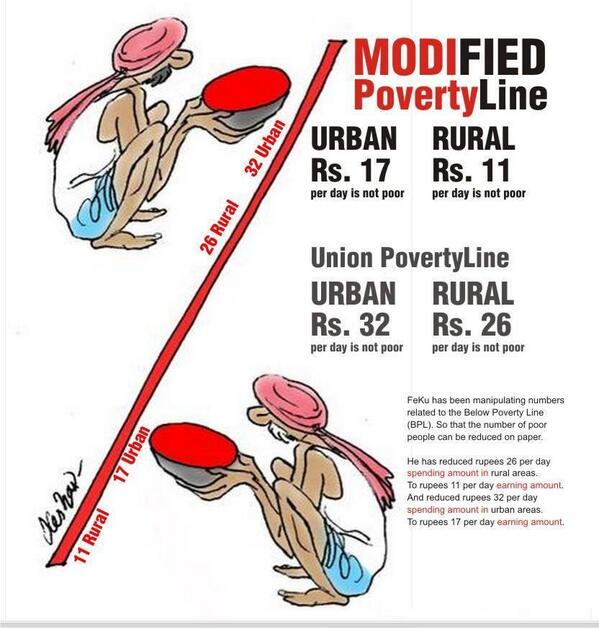 A decade later, how come Modi, the man responsible in a big way for BJP-NDA’s defeat in 2004, is being projected as the hero and saviour? Can the BJP-NDA and Modi’s ‘Gujarat Model’, which India recognised and rejected as ‘Feku’ (empty boasts) in 2004, claim to offer a credible alternative to the Congress-UPA regime, which has presided over scams, steep prices, farmers’ suicides, joblessness and repression? Surely what the country needs is not a replacement of the corrupt, pro-corporate UPA regime with another corrupt, pro-corporate, communal fascism? Surely, any real alternative has to be an alternative in terms of politics and policies and NOT just faces?
A decade later, how come Modi, the man responsible in a big way for BJP-NDA’s defeat in 2004, is being projected as the hero and saviour? Can the BJP-NDA and Modi’s ‘Gujarat Model’, which India recognised and rejected as ‘Feku’ (empty boasts) in 2004, claim to offer a credible alternative to the Congress-UPA regime, which has presided over scams, steep prices, farmers’ suicides, joblessness and repression? Surely what the country needs is not a replacement of the corrupt, pro-corporate UPA regime with another corrupt, pro-corporate, communal fascism? Surely, any real alternative has to be an alternative in terms of politics and policies and NOT just faces?
Let us take a closer look at Modi’s campaign and the facts on the ground, to see if indeed Modi can offer any alternative or solution to the Congress-UPA’s policies.
In the NaMo campaign, the chief minister who presided over a horrific genocide in 2002 is being painted as the messiah of ‘good governance’ and ‘economic growth.’ So the Modi image makeover project has a two-fold slogan: Forget 2002, Forget the rapes, murders and fake encounters, Forget the state machinery’s role in 2002, and Parade Modi model of ‘growth’, ‘development’ and ‘good governance.’ The message is, if we want ‘governance’, we should concede that communal violence or fake encounters or corporate land grab are irrelevant questions.
Who has Modi Hired for His IMAGE-MAKEOVER?
On 19 November, 2007, Times of India carried the following piece:
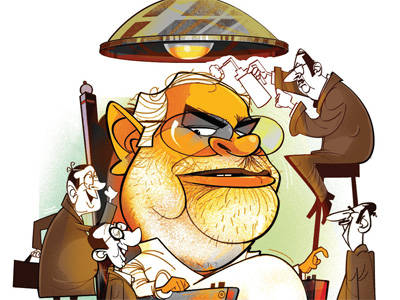 Modi’s image builders have dictators on client list.
Modi’s image builders have dictators on client list.
(http://timesofindia.indiatimes.com/home/specials/Modis-image-builders-have-dictators-on-client-list/articleshow/2600140.cms)
Adolf Hitler was a brilliant propagandist. Narendra Modi too believes in the power of image. This is probably why the chief minister hired a US lobbying firm which has serviced clients like former Nigerian dictator Sani Abacha and President-for-life of Kazakhstan Nursultan Abishuly Nazarbayev.
This Washington-based firm, APCO Worldwide, was hired by Modi sometime in August this year, in the run-up to an important Assembly election, to improve his image before the world community. Among its recent clients are Mikhail Khodorkovsky, a former Communist youth leader-turned-Russian billionaire with mafia links.
The firm has a distinction of taking contracts of boosting images of leaders who fell out of favour of their followers.
On the face of it Apco Worldwide’s brief is to build and sell Brand Gujarat to the international community. But according to sources Modi, who was denied visa by the US earlier because of the taint he earned in the 2002 riots, wants his image to be improved so that he gets to visit the US in future….
The Gujarat government will pay APCO 25,000 USD per month for the Modi image building exercise.
Sources in the government said Modi thought of this image-building exercise during his visit to Switzerland earlier this year. His government shortlisted some seven national and international firms, without floating tenders of which two were shortlisted. Even though it quoted a sum that was three times more than others, Apco was picked for the job. The reason given was that Apco has a better team. Apco has former senators from Republican and Democratic parties working with it.”
What has been the main purpose of this sustained PR exercise?
EPW editorial of 20 April, 2013 notes the following: “It is apparent that this was to project Narendra Modi as the undisputed leader of the opposition to the Congress-led United Progressive Alliance government for the 2014 general elections. In this the campaign has been successful. It has managed to overcome the immediate obstacles – within the RSS’ family and the existing and potential allies – to pose a stark choice to India’s political class: those against the Congress have to be prepared to deal with Modi or risk political irrelevance in the post-2014 Lok Sabha…
What has been the main message of Modi’s PR campaign? Behind all the carefully outlined speeches and choreographed performances, Modi is telling India’s dominant classes – industrialists, urban professionals and the rural rich – that he can successfully overcome the obstacles to higher economic growth, itself a code word for faster circulation of capital and higher returns on investments, by “managing” democracy as he has done in Gujarat through a combination of communal terror and sops to some sections. Modi’s promise is that he will do this much better than what the Congress has managed to do in the past decade.”
Given the crafted image makeover and PR exercise – powered by the infamous international PR agency APCO Worldwide and the likes – and sustained corporate media blitzkrieg to promote ‘Brand Modi’, it becomes important to take a look at the real FACTS beyond the orchestrated HYPE.
As we sift the facts from the hype, we can see that Gujarat’s performance on all criteria has not been in any way better than that of other states, and moreover, Gujarat’s neoliberal development model has displayed all the distressing effects on people’s lives and the economy that have been felt in the rest of the country.
On ‘Growth’ indicators: During the five years (2006-11), Gujarat was outstripped by Maharashtra, Haryana, Chhattisgarh, Bihar and Odisha (Economic Times, 26 Dec 2012). In terms of per capita income, in 2011 Gujarat (with Rs 63,996) ranked 6th after Haryana (Rs 92,327), Maharashtra (Rs 83,471), Punjab (Rs 67,473), Tamil Nadu (Rs 72,993) and Uttaranchal (Rs 68,292). But Gujarat has higher per capita debt than UP or Bihar.
On Investment indicators: Despite the much-touted Vibrant Gujarat programmes, it is interesting to note that foreign direct investment is not the highest in Gujarat. Maharashtra leads this list while Gujarat is fifth. Vibrant Gujarat summits have not yielded as much as the State government would like others to believe. According to the government’s own “Socio-Economic Review, Gujarat State, 2011-12”, the promised investments in 2011 were over Rs.20 lakh crore, but only about Rs.29,813 crore was actually invested. In the same year, out of more than 8,300 memorandums of understanding (MoUs) signed, only about 250 became a reality! ( Frontline, 8 March, 2013)
Quality of Industrialisation: The industries that have flourished the most in Gujarat are all highly hazardous: poisonous chemicals! Gujarat has India’s highest number of pollution hot spots with groundwater contaminated in 74 out of its 184 tehsils. During 2012-13, over 60,000 small and medium enterprises have shut down in Gujarat.
Per capita income in the state is half of its urban income, indicating huge urban-rural inequality.
Therefore, it is clear that Gujarat is NO ‘special’ performer under Modi, when it comes to ‘economic growth’. A highly urbanized Gujarat has always been home to India’s largest business and trading community, which has always been ‘enterprising’ in its economic ventures, even before Modi became chief minister!
And What are Gujarat’s Social Development Indicators?
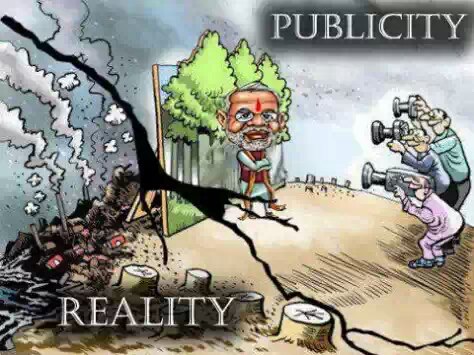 In social sector spending as a proportion of public expenditure, Gujarat ranks a lowly 19th among India’s 21 major states.
In social sector spending as a proportion of public expenditure, Gujarat ranks a lowly 19th among India’s 21 major states.
In 2011, Gujarat ranked 11th in the Human Development Index. In crucial indicators like education and health, Gujarat has witnessed a DECLINE in ranking to 9th and 10th positions respectively in a group of 19 major states. Education, health and nutrition indicators are dismal, especially for women and children. Dropout rates in schools are high at 58% compared to the national average of 49%. For dalits the dropout rate increases to 65% and for tribals, to 78%. In higher education Gujarat’s gross enrolment ratio (GER) of 17.6 is lower than the national average of 20.4 and much below equally advanced states like Tamil Nadu (38.2) and Maharashtra (27.4). In health, Gujarat ranks 10th in the rate of decline in infant mortality. Moreover infant mortality is significantly higher among girls than boys. In Life Expectancy Gujarat comes 8th (with the average longevity of 62.15 years), below even Bihar’s 62.85 years. 45% of urban children and 60% of rural children are not immunized.In rural areas, 60% of child deliveries do not happen in institutional conditions. In healthcare delivery system, shortage of doctors at primary health centres (PHCs) is 34% and shortage of specialists like pediatricians and gynecologists at community health centres (CHCs) is 94%! Infrastructure itself has not yet been built – 21% of sub-centres, 19% of PHCs and 11% of CHCs do not exist. In tribal areas, 70% of X-Ray technicians and 63% of pharmacists are not posted, while there is a 100% shortage of specialist doctors. In the Global Hunger index, Gujarat is part of the bottom 5 states in India, and globally, performs worse even than countries like Haiti. Malnutrition is severe among children (47%) and women; higher than the all-India average. 80% of children below 4 years and 60% of pregnant women are anaemic in Gujarat (a virtual anaemia epidemic that Modi laughs off as a case of ‘beauty conscious girls’ starving themselves!).
Jobless growth has been the norm in Gujarat – NSSO data shows growth in employment for the period 1993-94 to 2004-05 was 2.69 percentage per annum, whereas for 2004-05 to 2009-10 it came down to zero. Atul Sood, in a recent collection of essays, Poverty Amidst Prosperity: Essays on the Trajectory of Development in Gujarat, notes that Gujarat “witnessed not merely jobless growth but also the lowest share of wage income in total income, one of the highest use of contract workers in organized manufacturing and rising trends of casualisation of workforce. ” This apart, 5 million livelihoods have been lost in Gujarat owing to development projects: accounting for 10% of the population. Labour rights are virtually nonexistent.
In the case of the much vaunted Sardar Sarovor Dam Project, a large part of the canal network is pending, water has not reached the farmers of “parched parts of Kutch and Saurashtra”, on the contrary, water of around 3.7 Billion Cubic Meters is diverted to industry and select urban localities! (http://nca.gov.in/news_index.htm) Is it fair for a Project, built and pushed ahead in the name of needy farmers and villages of Kutch and Saurashtra to divert waters, on a large scale, to corporates, urban municipalities and cities in Gujarat? Not just this, Modi Government has decided to exclude 4 lakh hecatres of land from the Command Irrigated Area of SSP and reserve the same for corporates, SEZs, SIRs etc.
Allowing Corporate Greed to Cause Irreversible Damage to Environment: All environmental regulatory norms are routinely violated for few corporate with disastrous impact on environment and necessary resources like water. The chemical-industrial hub that has developed in the last 10 years as a result of a flowing Narmada canal in the vicinity started discharging its untreated waste into the Mahi river. None of these new industrial plants, anywhere in Gujarat, meets the Gujarat Pollution Control Board’s [GPCB] norms. Yet they have a free hand. As a result, most of the rivers in the State are heavily polluted. Three cities of Gujarat, Vapi, Ankaleshwar and Vatva, figure in the Central Pollution Control Board’s list of the top 10 most polluted cities in India, with Vapi ranking first. The private ports and SEZs in the coastal regions are examples of open violation of the Coastal Regulation Zone’s norms. Unofficial estimates say that about 600 villages will abandon agriculture in the next five years. The obsession with promoting industries, even at the cost of local economies and ecological sustainability, barely makes for a development model and only points to the structural nexus between the Modi government, corporate giants, and real estate honchos.
The story in the agrarian scene is that of reversal of land reforms principles. The defenders of Modinomics take pride in the high-speed corporatisation of Gujarat’s agriculture. The direct outcome of this agricultural model is the further marginalisation of the most poor section among the agricultural community. The legislative changes like allowing non-local, non-farming groups to enter the rural land market are solely aimed at preparing field for the big corporate houses to rob the marginal farmers of their right to land. The direct outcome is the fact that the average size of marginal land holding is becoming smaller compared to the national average and the largest size category(above 20 hectare) has gained in terms of average size. Over time, the access to land to the Scheduled Caste and Tribes have worsened in the state. Leasing out and selling of land by the marginal farmers in the face of an aggressive corporate driven policy where the marginal farmers find it impossible to hold on to their source of livelihood and continue in farming is the reality of agricultural situation in Gujarat.
Promoting Privatised Infrastructure: The dominant characteristic of Gujarat model of infrastructural development is encouraging private investment in port, rail, road and power. While this has allowed private conglomerates to strengthen their own profitability in other sectors, it has predictably created a situation where this pattern of infrastructural development has neglected providing access to human habitation. Even today 3380 human habitations are not connected with road in Gujarat.
What about corruption and corporate land grab?
CAG audit reveals that Modi’s Government has done in Gujarat what Manmohan Singh’s did at the Centre: extend undue benefits to corporates at huge costs to the public exchequer and loss of livelihoods. The 2010-11 CAG report tabled in Gujarat assembly on 30 March 2012, has estimated bungling of more than Rs 16,000 crore in 2010-11. It had also pointed out irregularities of Rs 26,672 crore in the Modi government in the last nine years. (DNA 31 March 2012) To take just one example, the CAG has observed that the Gujarat State Petroleum Corporation, supposed to be Modi’s special pride and joy, has suffered huge financial losses due to cost overrun at KG basin block where production has not commenced even after spending over Rs 7,000 crore (Rs 70 billion). Besides irregularities and cost overrun at KG basin project, the auditor has also noted that GSPC has suffered financial losses in gas trading activities on account of undue favours extended to Modi’s most favoured industrial house, the Adani group. The CAG report notes, “During 2006-09, GSPC sold gas to Adani group at a price which was much lower than its purchase price. This incurred loss of Rs 70.5 crore (Rs 705 million).”
In land allotment too, CAG noted a Rs. 580-cr. loss to state exchequer as Modi govt. favoured corporates like Reliance Industries Ltd (RIL), Essar Steel and Adani Power Ltd, Ford, L&Tetc. (The Hindu, 4 April 2013).
Why did Ratan Tata say, “YOU ARE STUPID IF YOU ARE NOT IN GUJARAT?” The Gujarat government allotted 1100 acres of land to Tata Motors Ltd to set up the Nano plant near Sanand at Rs 900 per square metre while its market rate was around Rs 10,000 per square metre. Further, Modi gave Ratan Tata a soft loan of Rs 9,570 crore at a negligible interest of 0.1 per cent to shift the Nano project to Gujarat. Repayment of this ‘loan’ was deferred for 20 years. In all, the Modi Government has offered over Rs 30,000 crore in sops to Tata Motors. In other words, for an investment of Rs.220 billion by the Tatas, the Gujarat government gives sops worth Rs.300 billion.
Land was allotted to Adani Group for the Mundra Port & Mundra Special Economic Zone (SEZ) at 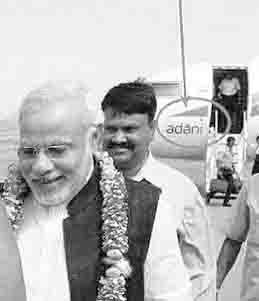 Re1 per square metre. Infact, on March 1, 2012, Gujarat revenue minister conceded in the Assembly that “The Adani Group has been allotted 14,305.49 acre (equivalent to 5.78 crore square metres) land in Kutch for different companies. The land has been allotted at a price ranging from Re1 to Rs 32 per sq mt,” (DNA 1 March 2012). Similarly land has been handed over to real estate developers like Raheja at dirt cheap rates, whereas the public sector Indian Airforce was asked to pay a MUCH higher price for land!
Re1 per square metre. Infact, on March 1, 2012, Gujarat revenue minister conceded in the Assembly that “The Adani Group has been allotted 14,305.49 acre (equivalent to 5.78 crore square metres) land in Kutch for different companies. The land has been allotted at a price ranging from Re1 to Rs 32 per sq mt,” (DNA 1 March 2012). Similarly land has been handed over to real estate developers like Raheja at dirt cheap rates, whereas the public sector Indian Airforce was asked to pay a MUCH higher price for land!
Armed with the 2009 Gujarat Special Investment Region (SIR) Act, Modi govt. has began invading every nook and corner of Gujarat for grabbing farmland, pastures, forest land. Villagers surrounding Jamnagar are protesting against the allotment of 610 acres of gauchar land to Reliance Group for a SIR. Similar protests are breaking out in many parts of central and south Gujarat like Dholera, Vagra, Karjan, Navsari etc against Modi’s aggressive land grab drive.
Predictably, Modi tried his best to block the appointment of a Lokayukta in Gujarat for a very long time. Particularly when he was facing allegations of massive corruption and irregularities in at least 17 scams!
Who is Controlling Gujarat’s Natural Resources – Any Need to Guess? Saurabh Patel, an MBA from USA and richest man in th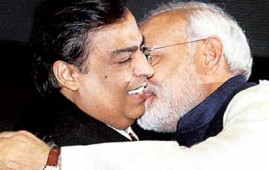 e Gujarat ministry, is the (next/first) most important man in the cabinet.
e Gujarat ministry, is the (next/first) most important man in the cabinet.
But more importantly, he is a brother-in-law of Vimal Ambani, cousin of Mukesh Ambani, and predictably holds the portfolios of… guess what..?
Energy & Petrochemicals, Mines & Minerals, Cottage Industry, Salt Industry, Printing, Stationery, Planning, Tourism, Civil Aviation and Labour & Employment !!!
BJP’s Track Record on Corruption Beyond Gujarat:
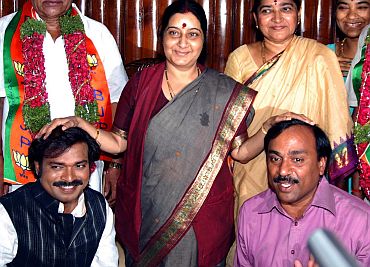 In Karnataka too BJP’s track record of running government is marked with crude robbery of the natural resources like iron ore. The story of Bellary Brothers (G. Karunakara Reddy, G. Janardhnana Reddy, and G. Somashekhara Reddy) is all too well known.A report by the Karnataka Lokayukta estimated that while the cost of mining (using subsidised transport and other facilities and beneficiary royalty structure) was merely Rs 427 per tonne, the sale price for exported ore was Rs 5000 to 7000 per tonne. This amounted to a staggering profit of 80 – 90% for the Reddy brothers. The state government got royalty of a mere Rs 27 per tonne, and since large percent of iron ore was illegally mined and exported the state government did not even get a token royalty. Two of the Reddy brothers have been in the Cabinet of BJP’s state government in Karnataka and the third one has been the chairperson of powerful Karnataka Milk federation. All this has been done under the Chief Ministership of Yeddyurrapa in Karnataka. A powerful dissent in the country against corruption and loot had forced Yeddyurappa to quit as CM after the Lokayukta indicted him and his two sons for taking bribe to favour the mining company. Before the Lokasabha elections, not only Yedurappa but all the three Reddy brothers are being warmly taken back in BJP and Yeddyurappa is being offered Loksabha ticket from BJP in Karnataka.
In Karnataka too BJP’s track record of running government is marked with crude robbery of the natural resources like iron ore. The story of Bellary Brothers (G. Karunakara Reddy, G. Janardhnana Reddy, and G. Somashekhara Reddy) is all too well known.A report by the Karnataka Lokayukta estimated that while the cost of mining (using subsidised transport and other facilities and beneficiary royalty structure) was merely Rs 427 per tonne, the sale price for exported ore was Rs 5000 to 7000 per tonne. This amounted to a staggering profit of 80 – 90% for the Reddy brothers. The state government got royalty of a mere Rs 27 per tonne, and since large percent of iron ore was illegally mined and exported the state government did not even get a token royalty. Two of the Reddy brothers have been in the Cabinet of BJP’s state government in Karnataka and the third one has been the chairperson of powerful Karnataka Milk federation. All this has been done under the Chief Ministership of Yeddyurrapa in Karnataka. A powerful dissent in the country against corruption and loot had forced Yeddyurappa to quit as CM after the Lokayukta indicted him and his two sons for taking bribe to favour the mining company. Before the Lokasabha elections, not only Yedurappa but all the three Reddy brothers are being warmly taken back in BJP and Yeddyurappa is being offered Loksabha ticket from BJP in Karnataka.
So, the ‘Modi model’ is no different from the Manmohan model either in its economic essentials or in corruption index. Why, then, is Modi a more preferred hero for the corporates at this juncture? There is growing public anger at the steady exposure of the corporate-politics nexus that led to a haemorrhaging of the country’s resources and assets. The face of Manmohan is a spent and discredited force which can no longer avert the surge of mass anger and protests. So corporates need a fresh and tougher face, which can divert public anger away from the real impact of the pro-corporate policies. And here lies Modi’s Unique Selling Point (USP). 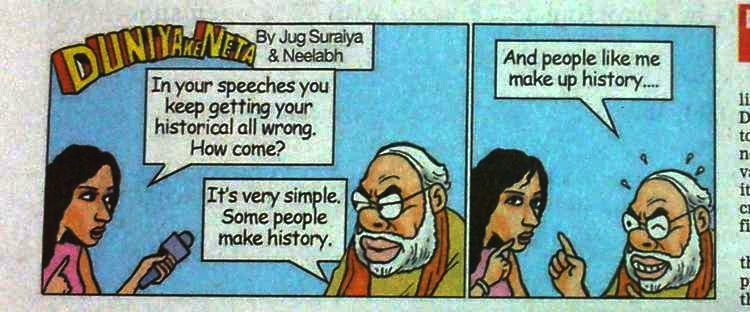 Equipped with the communal ideology and organisational network of RSS and proven track-record of 2002 pogrom, Modi guarantees a cocktail of hatred and violence against minorities as a key diversion tactic, to sustain a pro-corporate, repressive governance model. Post 2002, taking cue from the US-sponsored Islamophobia and so-called ‘war on terror’, a series of fake encounters were scripted to build up Modi’s image as a ‘Hindu nationalist’ hero being targeted by so-called ‘Muslim terrorists’. Each fake encounter reinforced the idea of Muslims as the supreme threat to the social/national order, who were ritually vanquished by Modi’s police force, over and over again.
Equipped with the communal ideology and organisational network of RSS and proven track-record of 2002 pogrom, Modi guarantees a cocktail of hatred and violence against minorities as a key diversion tactic, to sustain a pro-corporate, repressive governance model. Post 2002, taking cue from the US-sponsored Islamophobia and so-called ‘war on terror’, a series of fake encounters were scripted to build up Modi’s image as a ‘Hindu nationalist’ hero being targeted by so-called ‘Muslim terrorists’. Each fake encounter reinforced the idea of Muslims as the supreme threat to the social/national order, who were ritually vanquished by Modi’s police force, over and over again.
In simple words: NaMo projects Muslims or Christians as the enemy, so that people’s anger can be deflected from corporate loot and plunder or pro-corporate policies, to some minority community. Similarly Modi’s best political pals include Shiv Sena and MNS in Maharashtra, who unleash violence against poor migrant workers and students, while remaining silent on corporate plunder and farmers’ suicides in the same state! That is why communally divisive politics is extremely useful for the corporates too. Communal violence and hate-speech, then, is not an embarrassing aberration or a thing of the past, it is at the heart of the Modi model of governance.
True, we do not want Congress to misuse the genuine concerns over secularism to hide all its sins. But at the same time, we cannot allow the BJP to misuse the genuine concerns over corruption, to hide its own sins! Nor can we allow the BJP and its allies to use hatred and violence (against minorities, migrants) to hide the genuine issues of pro-corporate policies that are devastating the people.
Let us recognise and defeat Modi’s heady communal-corporate fascist cocktail!
Let us defeat Congress-UPA’s regime of pro-corporate plunder and repression!
Let us vote for alternative policies, not faces and fakers of any hue!




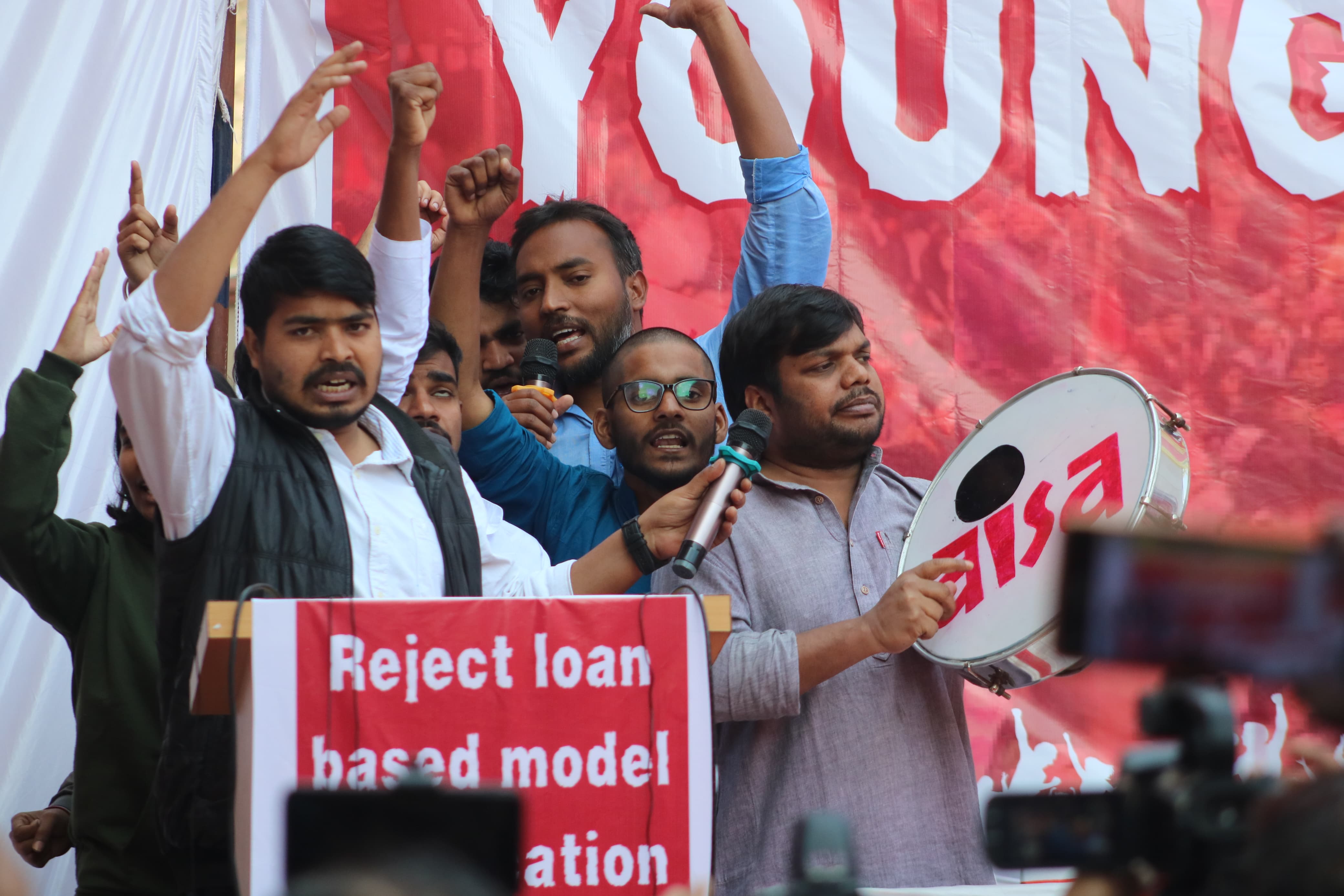
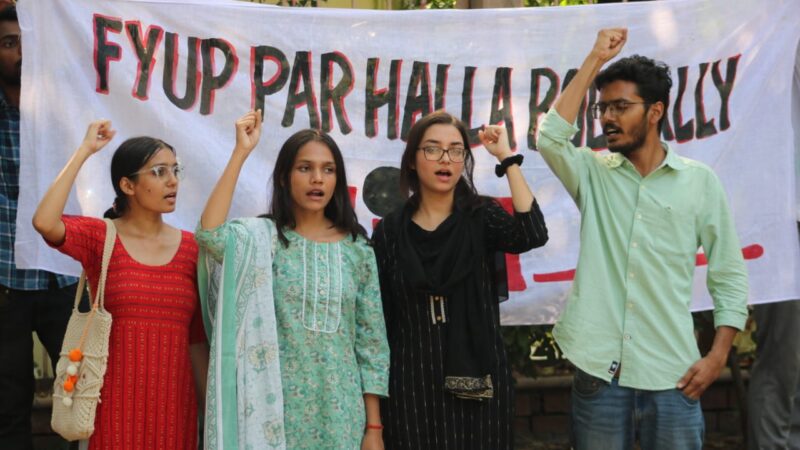
Very well written. A long needed article with all necessary statistics brought together. But finally, I want to add that only protests and defensive activities won’t do – INDIA NEEDS AN ALTERNATE LEFT DEMOCRATIC GOVERNMENT IN THE CENTER TO CRUSH THESE FASCISTS !!!
if you think pappu or anarchist is going to change the future of country who dont know on what issues he is fighting election…AK says he is fighting against corruption but no candidate against most corrupt Sonia Gandhi…all corrupt parties are just trying to stop MODI and AAP has also joined hands with them…..so my and all banarasis’ vote goes to MODI.
The site http://narendramodifacts.com/ is an attempt to gather in one place information on Modi and the Sangh Parivar and link out to other progressive sources of information: corruption in Modi’s Gujarat; the real story of development in Gujarat; Gujarat violence of 2002; the so-called ‘clean chit’; his PR machine and relationship with the media; fake encounters; snoopgate, etc.
dear narendramodifacts:
thanks for providing us this link. this site is really ver organised and resourceful
Great blog you have here.. It’s hard to find quality writing like yours these days.
I really appreciate individuals like you! Take care!!